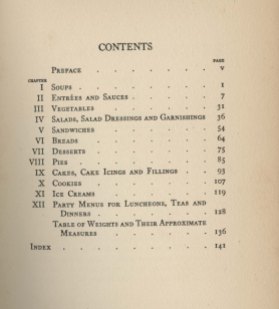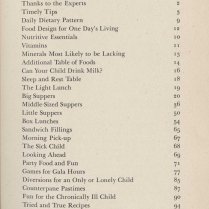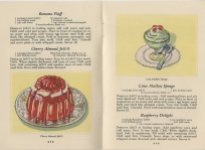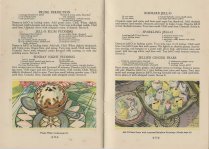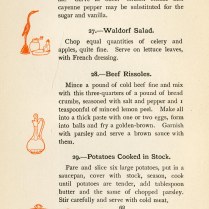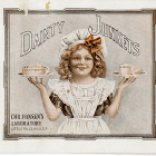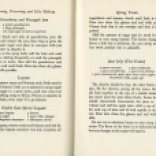During the fall, I wrote a series of posts about processing the Education Cookery Collection (#1, #2, and #3). That collection also includes a bunch of associated books and publications. Although those titles haven’t been cataloged yet, I pulled one of them to write about today. January is National Hot Tea Month and while it’s actually supposed to be around 60 degrees in Blacksburg today, that doesn’t mean we can’t talk tea-related food!
Tea-Room Recipes: A Book for Home Makers and Tea-Room Managers was written in by Lenore Richards and Nola Treat in 1925. As the subtitle suggests, its purpose was two-fold: recipes for the home and recipes for food-serving businesses. Richards and Treat, it seems, ran a cafeteria, and in their previous lives, were on the faculty of the College of Agriculture, University of Minnesota. So, they probably both had an extension service background.
From the preface:
This book contains what the authors have come to call tea-room recipes. These recipes are richer, more expensive and designed to server fewer people that those in “Quantity Cookery.” [more on that in a moment] They are especially for the use of home makers entertaining at luncheon, tea and dinner, and for the use of managers of tea rooms, clubs and similar institutions.
Tea-Room Recipes is about half desserts, so we can see the distinct emphasis on the “entertaining” element. There are a sea of pies, cakes (with icings and fillings), cookies, ice creams, puddings, torts, and gelatins. But before you get to those treats (unless you’re hosting an event that goes straight for the good stuff), there are several chapters on the more savory side. These sections cover soups, some surprisingly hefty entrees (lamb chops, nut loafs, macaroni bakes), a few quick-and-easy to prepare vegetables sides, salads (with dressings and garnishes like cheese balls), and one of my favorite topics, sandwiches. The sandwich chapter begins with something called the “Tombeche,” which took a moment to decipher, but makes sense when you see the ingredient list: tomato, dried beef, and cheese. Plus, there are some strange ground/melted chocolate or orange fillings, lots of cream cheese/nut combinations, and a hefty dose of olives. A bread chapter covers the savory (including a bacon bread!) and the sweet (muffins and other breakfast sweets).
In addition to this book, Richards and Treat also wrote Quantity Cookery, which seems like a logical companion piece to this one. Tea-Room Recipes can be used to feed a family of, say 4-6, but it can also be used to feed a restaurant full of people. A book like Quantity Cookery takes that to the next level (though it has a more specific, commercial audience).
Oh, and in case you’re curious, since I started this post talking about Hot Tea Month? Tea-Room Recipes does not contain any recipes for tea. I guess the assumption is you can handle that part on your own…


